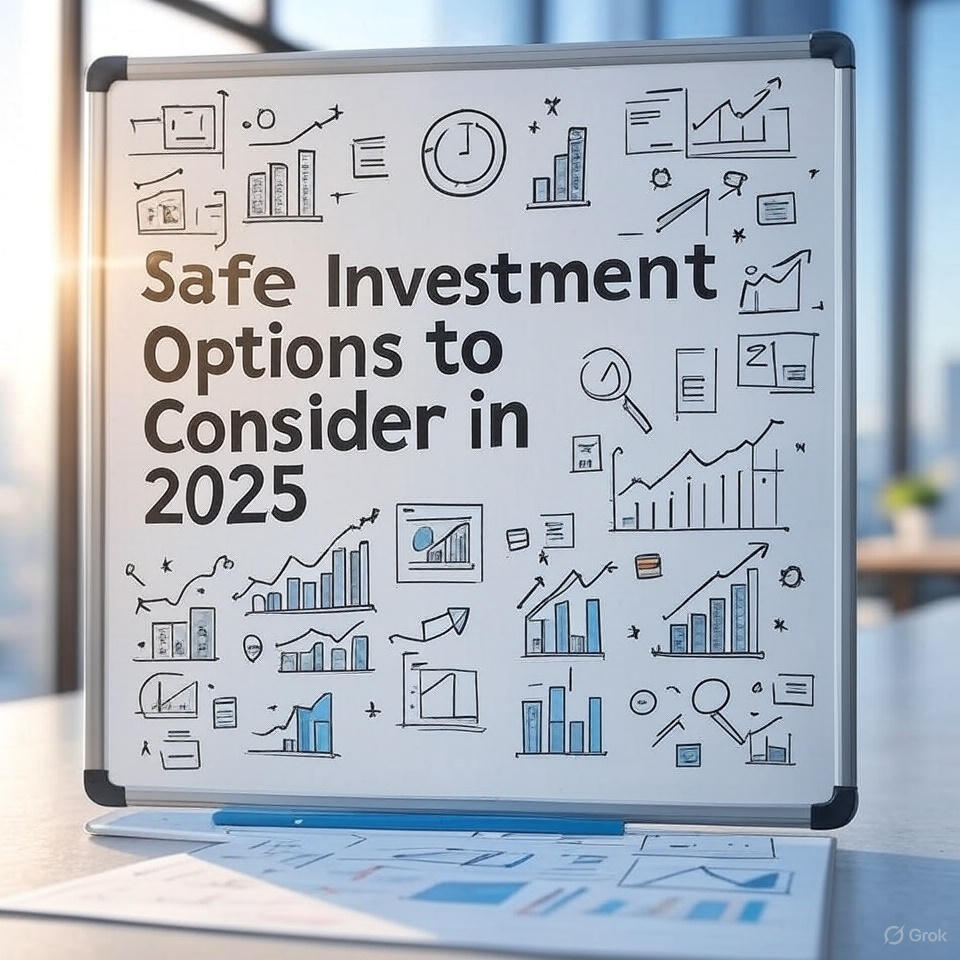In an economic climate where uncertainty seems to be the only constant, many people are questioning how best to protect and grow their money without exposing themselves to unnecessary risk. The events of recent years have highlighted the importance of having a solid financial foundation, and for many, this means looking beyond traditional savings accounts to investment options that offer better returns whilst still prioritising capital preservation. Understanding the landscape of lower-risk investments available in 2025 can help you make informed decisions about where to place your money for both security and modest growth.
The challenge facing savers and conservative investors today is finding the right balance between safety and returns in a world where inflation can quietly erode the purchasing power of cash left sitting in low-interest accounts. Whilst no investment is entirely without risk, there are numerous options that prioritise capital preservation whilst offering the potential for returns that can help maintain or modestly increase your wealth over time. The key is understanding the different types of risk involved and choosing investments that align with your personal circumstances, timeline, and comfort level.
Before exploring specific investment options, it’s crucial to understand that what constitutes a “safe” investment depends largely on your individual situation and goals. For some, safety means absolute capital protection with guaranteed returns, even if those returns are modest. For others, it might mean accepting minimal risk of capital loss in exchange for better potential returns that can help combat inflation. Your age, financial commitments, existing savings, and when you might need access to your money all play important roles in determining which investment approach might be most suitable for your circumstances.
Traditional Safe Haven Options
Cash Individual Savings Accounts (ISAs) remain one of the most popular choices for safety-conscious investors, offering tax-free growth on your savings up to the annual allowance of £20,000. Whilst interest rates on cash ISAs have been historically low in recent years, some providers are now offering more competitive rates that can provide meaningful returns whilst keeping your capital completely secure. The beauty of cash ISAs lies in their simplicity and accessibility – your money remains liquid, meaning you can access it when needed, and there’s no risk of losing your initial investment.
Fixed-rate bonds and term deposits represent another traditional safe option, offering guaranteed returns in exchange for locking your money away for a specified period. These investments can be particularly attractive when interest rates are favourable, as they allow you to secure a known rate of return for the duration of the term. The trade-off is reduced liquidity, as accessing your money early typically involves penalties, but for money you won’t need in the short term, they can provide peace of mind and predictable returns.
Premium Bonds, issued by NS&I, offer a unique combination of capital security with the excitement of potential prize wins. Whilst the average return may be modest compared to other options, your initial investment is guaranteed by the UK government, and there’s always the possibility of winning larger prizes. For those who enjoy the lottery-like element whilst maintaining complete capital security, Premium Bonds can form an interesting part of a diversified safe investment approach.
“Many people don’t realise that building wealth safely isn’t just about investments – it’s about having a comprehensive financial strategy,” explains Sam Foster, Head of Marketing & Communications at Evlo. “This includes managing debt effectively, building emergency funds, and then considering how investments fit into your broader financial picture. Sometimes paying down expensive debt can offer better guaranteed returns than any investment option available.”
Diversified and Inflation-Protected Approaches
Index-linked gilts and inflation-protected government bonds offer a way to maintain purchasing power over time by providing returns that adjust with inflation. These investments are backed by the UK government, making them extremely secure from a credit risk perspective, whilst the inflation-linking feature helps protect against the erosion of your money’s real value over time. However, they can be more complex than traditional bonds and may fluctuate in value in the short term, making them more suitable for longer-term investment horizons.
Stocks and Shares ISAs filled with low-risk, diversified funds can provide a stepping stone between cash savings and more adventurous investing. Conservative mixed-asset funds, which typically hold a combination of bonds, defensive stocks, and cash, aim to provide modest growth whilst minimising volatility. These funds are professionally managed and offer instant diversification, spreading risk across multiple asset classes and geographic regions. Whilst there’s always some risk of short-term fluctuations, the diversified approach can help smooth out volatility over time.
Corporate bonds from highly-rated companies can offer higher yields than government bonds whilst still maintaining relatively low risk profiles. These investments involve lending money to established corporations in exchange for regular interest payments and the return of your capital at maturity. Investment-grade corporate bonds from well-known, financially stable companies can provide a middle ground between the security of government bonds and the higher returns available from riskier investments.
Building societies and peer-to-peer lending platforms that focus on property-backed loans represent another category worth considering for those seeking slightly higher returns whilst maintaining a focus on security. These options often involve lending against property assets, providing some security for your investment, though they typically involve longer tie-up periods and may not offer the same level of protection as traditional savings accounts.
One often-overlooked aspect of safe investing is the importance of spreading your money across different institutions and protection schemes. The Financial Services Compensation Scheme (FSCS) protects deposits up to £85,000 per institution, so if you have substantial savings, distributing them across multiple banks or building societies can ensure full protection whilst maximising your access to the best available rates.
As you consider your options for 2025, remember that the safest investment strategy is often one that matches your money to your timeline and goals. Money you might need within the next year or two is generally best kept in easily accessible accounts, even if the returns are modest. Money you won’t need for several years might be suitable for slightly riskier options that offer better potential returns. Most importantly, any investment decision should fit within a broader financial plan that includes emergency savings, appropriate insurance, and consideration of your other financial goals and obligations.
The investment landscape in 2025 offers numerous options for those prioritising safety, but the best choice for you will depend on your individual circumstances, risk tolerance, and financial objectives. Taking time to understand these options and how they fit into your overall financial picture is the foundation of successful, safe investing.





